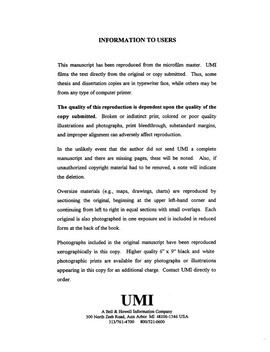| dc.contributor.advisor | Agrawal, A. K., | en_US |
| dc.contributor.author | Al-ammar, Khalid Nasser. | en_US |
| dc.date.accessioned | 2013-08-16T12:30:24Z | |
| dc.date.available | 2013-08-16T12:30:24Z | |
| dc.date.issued | 1998 | en_US |
| dc.identifier.uri | https://hdl.handle.net/11244/5754 | |
| dc.description.abstract | Effects of burner diameter and jet exit Reynolds number on flame shape and scalar profiles in normal and microgravity were evaluated. It was confirmed that the flame height varies linearly with Reynolds number in the laminar cases. Further, the flame height was shown to be independent of gravity within the range of jet-exit Reynolds numbers used (40 to 70). At a given jet-exit Reynolds number, the flame shape normalized by the burner diameter was independent of the burner diameter. Scalar profiles in microgravity were found to extend further in the radial direction as compared to those in normal gravity. The radial expansion was greater for flames with higher jet exit Reynolds numbers. | en_US |
| dc.description.abstract | Contour plots of angular deflection reveal higher radial gradients in normal gravity compared to those in microgravity. Temperature profiles during transition from normal to microgravity in the drop tower were obtained to determine the extent of steady-state microgravity conditions achieved in experiments. The results show that the high temperature regions e.g., the flame surface, reached steady-state prior to the lower temperature regions e.g., the schlieren boundary. The time to reach steady-state decreased as the jet exit Reynolds number was increased. The schlieren boundary did not reach steady-state at low jet exit Reynolds numbers because of the greater influence of gravity. | en_US |
| dc.description.abstract | Two pre-existing analytical models for axisymmetric diffusion flames in the far-field of the jet-exit were considered. One model was based on the similarity analysis, while the other model provided a closed-form solution. These models were found to be inapplicable in context of this research, in part, because of the low Reynolds numbers used in experiments. The models, however, predicted correct qualitative trends of the flame shape. | en_US |
| dc.description.abstract | Transitional flames were investigated to show the effect of Reynolds number and fuel dilution by helium. Scalar profiles were obtained in the near burner laminar portion of the transitional flame. Both in normal and microgravity, the axial plane where the laminar flame became transitional moved upstream as the Reynolds number was increased. The transition was delayed in microgravity, and adding helium to the fuel delayed transition in both normal and microgravity. | en_US |
| dc.description.abstract | The quantitative Rainbow Schlieren Deflectometry (RSD) technique was used for the first time to measure scalar profiles in laminar and transitional hydrogen gas-jet diffusion flames burning in quiescent air in normal and microgravity. The angular deflection data obtained across the field-of-view by the RSD technique were used with Abel inversion to find the refractive index of the reacting mixture. The refractive index was related to the temperature and oxygen mole using the conserved scalar approach, combined with chemical equilibrium. Probe measurements of temperature and oxygen mole fraction were taken to validate the RSD technique. Good agreement was reached between the probe and RSD measurements in the fuel-lean side of the flame surface. The RSD measurements in the fuel-rich side of the flame were less reliable, in part, because of the measurement uncertainty and the assumption of chemical equilibrium. | en_US |
| dc.format.extent | xix, 185 leaves : | en_US |
| dc.subject | Flame. | en_US |
| dc.subject | Reduced gravity environments. | en_US |
| dc.subject | Physics, Fluid and Plasma. | en_US |
| dc.subject | Engineering, Aerospace. | en_US |
| dc.subject | Jets Fluid dynamics. | en_US |
| dc.subject | Gas dynamics. | en_US |
| dc.title | Scalar measurements and analysis of hydrogen gas jet diffusion flames in normal and microgravity. | en_US |
| dc.type | Thesis | en_US |
| dc.thesis.degree | Ph.D. | en_US |
| dc.thesis.degreeDiscipline | School of Aerospace and Mechanical Engineering | en_US |
| dc.note | Major Professor: A. K. Agrawal. | en_US |
| dc.note | Source: Dissertation Abstracts International, Volume: 59-12, Section: B, page: 6388. | en_US |
| ou.identifier | (UMI)AAI9914407 | en_US |
| ou.group | College of Engineering::School of Aerospace and Mechanical Engineering | |
